Lake County Enters Warning Level
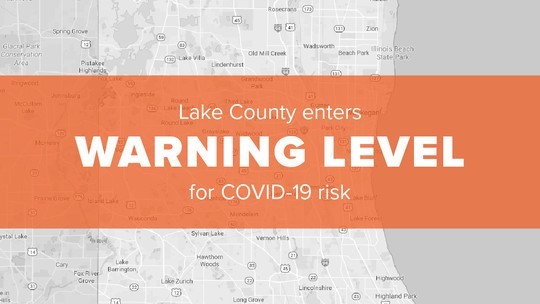 Today, Lake County again moved from blue to orange on the Illinois Department of Public Health County Level Risk Metrics Map. Being at the ‘orange’ level means that there are warning signs of increased COVID-19 risk.
What caused the change in designation?
Slight increases in case rates and emergency department (ED) hospital visits for COVID-19-like-illness (CLI) from September 27 to October 3 have led to the change to an ‘orange’ designation for Lake County:
New Cases Per 100,000 People (Incidence Rate)
- There were 90 new COVID-19 cases per 100,000 people reported last week in Lake County, an increase from 85 new cases per 100,000 people the previous week.
- The target established by the state is less than 50 cases per 100,000 people.
- Lake County incidence rates have exceeded the state’s target since mid-July.
Adult Emergency Department (ED) Hospital Visits for COVID-19-like-illness (CLI)
- The percentage of adult ED visits for CLI was 4.3%, up from 2.8% the week before.
- The target established by the state is that the weekly percentage of CLI ED visits does not increase by more than 20% for two consecutive weeks.
What steps should be taken?
While guidance does not change with an increased risk level, it is important to remain vigilant. Practice the 3 Ws: Wear a Mask, Wash your Hands, and Watch your Distance.
Remember, don’t let your guard down just because you are around people you trust. Take precautions any time you are with others who don’t live in your household.
 According to a CDC update this week, COVID-19 is able to be spread by airborne transmission. This means that the virus can be spread by droplets and particles that linger in the air for minutes to hours. Someone could enter a room shortly after an infected person has left and breathe in the particles containing the virus. Airborne transmission is more likely in enclosed spaces with poor ventilation.
Airborne transmission is seen with other infectious diseases like tuberculosis, measles, and chicken pox. The most common form of transmission of COVID-19 is still close contact with a person who is infected. At this time, CDC guidance on protecting yourself and others remains the same.
Continue following the 3 Ws: Wear a mask, wash your hands, and watch your distance.

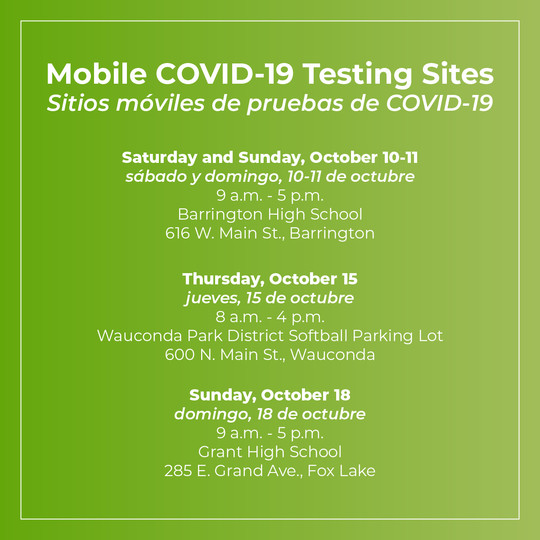 Free COVID-19 testing is available in Barrington this weekend. A mobile testing unit managed by the Illinois Department of Public Health will be stationed at Barrington High School (616 W. Main St., Barrington) this Saturday, 10/10 and Sunday, 10/11, 9 a.m. - 5 p.m., while supplies last.
Additional sites have been added for the following week including:
Wauconda Park District Softball Parking Lot (600 N. Main St., Wauconda) on Thursday, 10/15, 8 a.m. - 4 p.m., while supplies last and Grant High School (285 E. Grand Avenue, Fox Lake) on Sunday, 10/18, 9 a.m. - 5p.m., while supplies last.
Testing is free and open to all regardless of symptoms. A phone number and name are required in order to receive testing results. Photo identification and proof of insurance are helpful, but not required. High demand for testing may result in long wait times.
Those utilizing drive-thru testing must be seated at a functioning window. Once you get in line at the site, you will not be permitted to exit your car. All sites will also accommodate walk-up individuals. Only viral testing is provided at the mobile testing site. Read the full press release here. Learn about other testing sites in Illinois on the IDPH Testing page.
 Every week, the Lake County Health Department will be sharing the most frequently asked questions about the coronavirus pandemic. This week, we received the following questions:
Q: What are the Lake County Health Department’s recommendations for Halloween?
A: Please visit the IDPH page on Halloween Festivities and how to take precautions. Many Halloween festivities include close contact, which is known to spread COVID-19. The safest course of action is to stay home and limit activities to members of your household. Consider alternatives to trick-or-treating and other high contact activities. If you do plan to trick-or-treat, bring hand sanitizer, practice social distancing, and wear a mask that covers the mouth and nose (not a costume mask) while out. If you are passing out candy, consider spreading candy out on a table for kids to grab or make goodie bags in order to limit the contact between yourself and others.
Q: What is considered an outbreak of COVID-19?
A: An outbreak is defined as at least one confirmed case plus a suspected case within a congregate living facility, or two or more linked cases in another setting.
Q: Who is considered a “close contact”?
A: An individual is considered a “close contact” that requires quarantine if:
- They were within 6 feet of someone who has COVID-19 for a total of 15 minutes or more
- They provided care at home to someone who is sick with COVID-19
- They had direct physical contact with the person (hugged or kissed them)
- They shared eating or drinking utensils
- Someone sneezed, coughed, or somehow got respiratory droplets on the individual

During the COVID-19 pandemic, health departments across the United States have been putting out creative messages encouraging people to take precautions to stay safe. We like to highlight different health departments whose messages inspire us. Recently, the California Department of Public Health (CDPH) has needed to communicate about the pandemic as the west battles severe wildfires. |
|
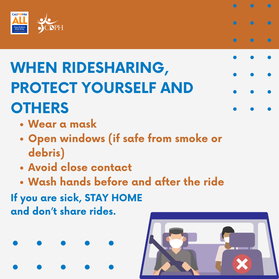 |
Some messaging had to be amended to account for wildfires; other guidance had to be altered entirely. CDPH sends messages in both Spanish and English as 39% of the state of California is Latinx. Mirroring the rest of the country, California has seen the Latinx population disproportionately affected by the pandemic. CDPH continues to keep residents informed on how to stay safe and prepared.


If you have watched any of our Mental Health videos, such as Mindful Minute, or Coping with COVID-19, you have probably seen McKenzie Hensen. We are happy to congratulate McKenzie on recently becoming an author! Her new book, Reggie the Hedgehog, tells the story of one hedgehog’s journey to cope with scary memories from the past. The Reggie the Hedgehog website has resources for those who have experienced trauma. It also contains tips, like how to create a Safety Sanctuary. Learn more at ReggieTheHedgehog.com
|

In the United States, more than 250,000 women are diagnosed with breast cancer each year. The people who are at the most risk are women 50 and older. Be proactive with breast health by doing a monthly breast self-exam, as well as scheduling an annual clinical exam and mammogram. For more information about breast cancer, visit the CDC and National Breast Cancer Foundation, Inc.

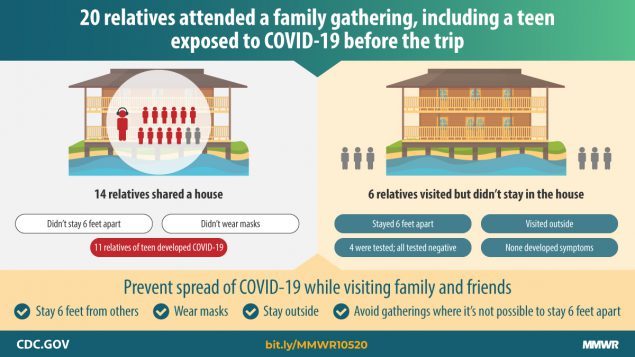 The CDC recently released a report highlighting the importance of wearing a mask and practicing social distancing while attending family gatherings. A 13-year-old was exposed to COVID-19 and then tested negative for the virus. Despite the teenager developing symptoms, her family attended an extended family gathering where many family members stayed in the same home. Within the home, they did not observe social distancing or wear face masks. Of the 14 people who stayed in the same house, 12 experienced symptoms and were found to have developed COVID-19. There were six additional family members that stayed off-site. During their visits, the six family members chose to only visit outside the home and maintained six feet of distance, but did not wear masks. These six family members did not develop symptoms and tested negative for COVID-19.
This experience highlights many important issues:
- Children can spread COVID-19.
- Social distancing works.
- Even with a negative test result, one should still self-quarantine for 14 days after a known exposure.
- COVID-19 can spread at social gatherings, especially during prolonged, close contact.
- It is important to follow the 3 Ws: Wear a mask, Wash your hands, Watch your distance.
Read the full report here.

Mental Health Awareness Week
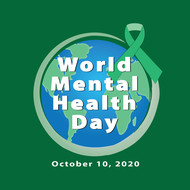
October 10 is World Mental Health Day. If you or someone you know is experiencing increased stress or anxiety as a result of the COVID-19 pandemic, know that you are not alone. A recent report from the CDC showed that 40% of adults who were surveyed had struggled with mental health or substance use during the pandemic. If you are experiencing a mental health crisis, call our Crisis Care Program to speak with a counselor at (847) 377-8088 or by walking in at 3002 Grand Avenue, Waukegan. We are here for you 24 hours a day, 7 days a week. If you are looking for ways to practice mindfulness, check out our Mindful Minute series. Taking time to practice self-care can reduce stress and improve your mental and physical health.
|
CDC Foundation Heroes
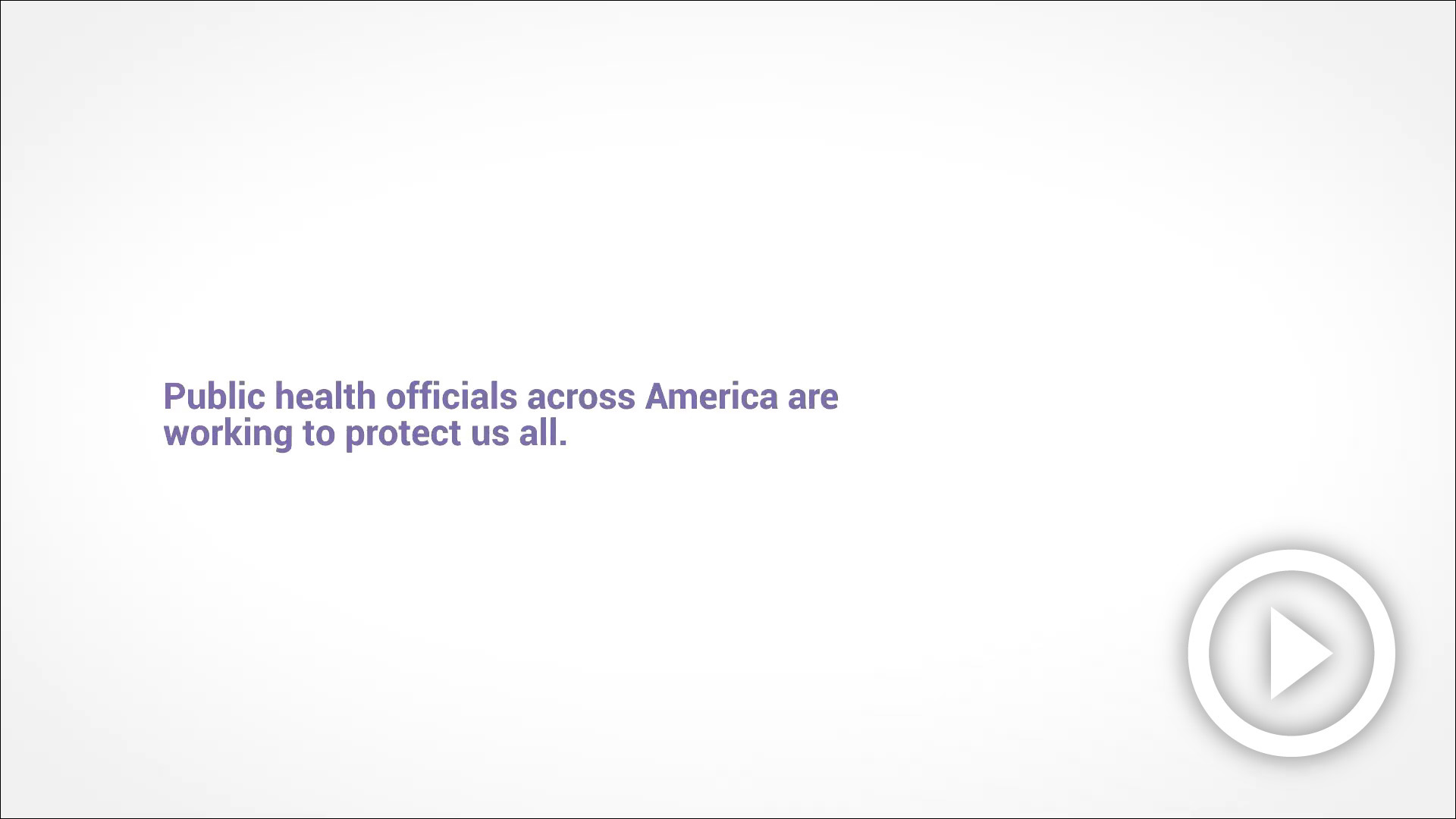 Recently, our Health Department was featured in the CDC Foundation’s video “Honoring Our Health Heroes Who Protect Us All.” Their hero campaign thanks all public health employees working on the frontlines to combat the COVID-19 pandemic. Visit the CDC Foundation Hero page to read messages of the positive impact of public health work across the country. You can even leave a message of your own!
Region 9 Update and Lake County COVID-19 Cases
The Region 9 testing positivity rate is 5.8% as of October 6, 2020, with daily increases reported in 6 of the past 7 days. Commit to the 3 Ws – Wear a mask, Wash your hands, and Watch your distance.
As of October 9, 2020, 18,056 Lake County residents have tested positive for COVID-19, including 481 deaths.
Our Coronavirus Data Hub provides data and resources for our county, including cases and deaths, tests performed, demographic data, and an interactive map and charts.
View the Lake County, IL Coronavirus Data Hub
 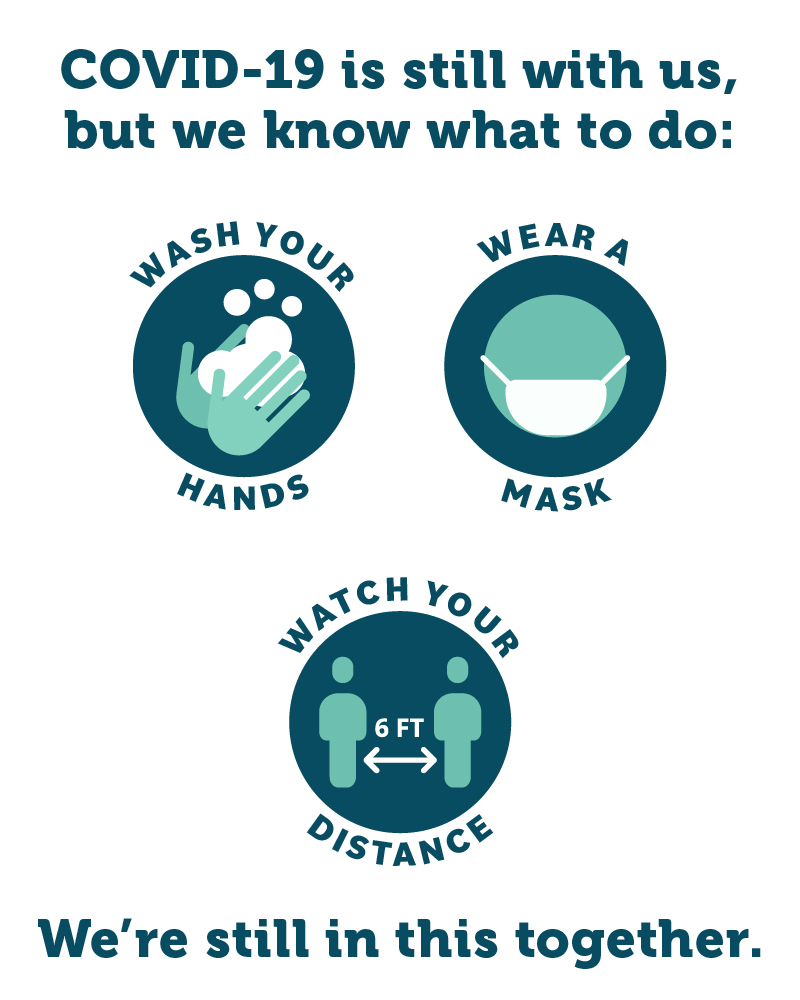
 Do you have questions? The Illinois Department of Public Health (IDPH) has established a COVID-19 hotline and email address to answer questions from the public:
For additional information from the IDPH, visit: http://www.dph.illinois.gov/topics-services/diseases-and-conditions/diseases-a-z-list/coronavirus

Community Guidance and Resources
Protect yourself and your community. Our Information for Specific Groups page is now Community Guidance and Resources. This page is more user-friendly and has information to help residents stay safe and informed.
Communication Resources
We need your help to keep our communities healthy and safe. The Lake County Health Department, Illinois Department of Public Health (IDPH), and Centers for Disease Control and Prevention (CDC) offer free resources including fact sheets, flyers, posters, and videos.
View communication resources

Forwarded this email? Sign up to receive COVID-19 updates directly from the Lake County Health Department.
|